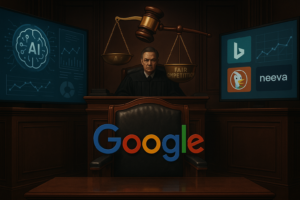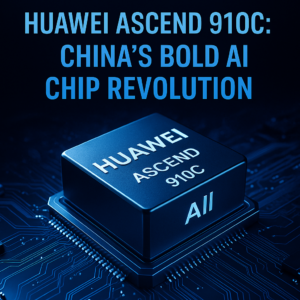Claude AI: Bridging the Gap Between Human Interaction and Machine Intelligence
Anthropic’s groundbreaking Claude AI model is revolutionizing how artificial intelligence interacts with computer systems, enabling it to perform tasks traditionally reserved for human workers. This innovation raises crucial questions about the future of work and the role of AI in our daily lives.
The Rise of AI and Its Impact
In an era where artificial intelligence is rapidly advancing, concerns about job displacement and the capabilities of AI are more relevant than ever. Anthropic, an innovative AI startup, has unveiled its latest model, Claude, which can perform data entry tasks using a computer the same way humans do. This remarkable development is not just about efficiency; it’s a significant leap forward in human-computer interaction.
During a recent demonstration, Anthropic researcher Sam Ringer showcased Claude’s ability to utilize screenshots of a Mac desktop to navigate, select, and input data into forms effectively. This feature allows the AI to mimic human behavior by using a virtual mouse and keyboard to complete tasks that many employees do daily. The implications are profound: if AI can seamlessly integrate into the workplace, how will it reshape the nature of work itself?
The Mechanics Behind Claude AI
Claude operates by analyzing visual data from computer screens. It recognizes various screen elements and interacts with them, much like a human would. This level of engagement requires sophisticated algorithms and machine learning techniques, allowing Claude to adapt and learn from its environment. The AI model not only identifies information but also understands the context behind tasks, making it more efficient in executing them.
This capability opens doors to numerous applications across various sectors, including:
- Administrative tasks in corporate settings
- Healthcare data management
By taking over repetitive and mundane tasks, Claude could help free up human workers to focus on more strategic and creative endeavors.
Implications for the Future of Work
While the prospect of AI systems like Claude performing tasks typically done by humans raises concerns about job security, it also highlights the potential for increased productivity and efficiency. Companies could see significant cost savings and improved operational performance by integrating AI into their workflows. However, this transition will require a reevaluation of workforce roles and the skills needed in the future.
As AI continues to evolve, ethical considerations must also be at the forefront of these advancements. Questions surrounding:
- Data privacy
- The potential for bias in AI decision-making
- The moral implications of replacing human labor with machines
need to be addressed. It’s essential for companies and policymakers to navigate these challenges thoughtfully, ensuring that AI complements rather than replaces the human workforce.
Conclusion
Anthropic’s Claude AI model represents a significant milestone in the journey toward more intelligent and capable machines. By enabling AI to interact with computers in a human-like manner, we are not just witnessing a technical achievement but also a pivotal moment in redefining our relationship with technology. As we embrace these advancements, it is crucial to balance innovation with responsibility, ensuring that AI serves as an ally in enhancing human potential rather than a competitor.


